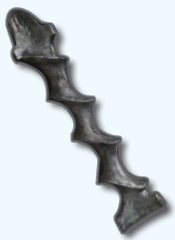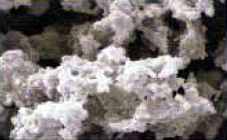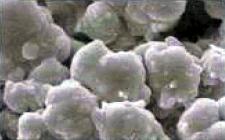About Water
To understand how our technology works let’s first remember some basic facts about water. Water is sometimes referred to as the “universal solvent”. This term is used as water has unique characteristics that allow it to break the bonds of larger more complex compounds. For example, place a small teaspoon of sugar or salt in a glass of water, stir vigorously and it will dissolve easily.
Although the water in your home is clear, it is not pure. Being a wonderful solvent, water is very receptive and dissolves small amounts of the soluble minerals it comes into contact with in nature. Water contains elements essential for healthy living, including calcium and magnesium.
Hardness in Water
Hardness in water is caused by Calcium and Magnesium. Conventional water softeners remove the essential Calcium and Magnesium macrominerals from the water supply, by replacing them with Sodium. One of the benefits of the solutions provided by Fluid Dynamics is that they do not remove these essential macrominerals.
Magnesium
While contributing to water hardness, Magnesium does not deposit as scale.
Calcium Carbonate
As we all know H2O can exist in various forms; Ice, Water and Steam.
Just as water can exist in various forms, so can Calcium Carbonate. The three forms of Calcium Carbonate are:
Calcite
Under certain circumstances ( temperature rise or an increase in pH levels), water is forced to discharge Calcium Carbonate. The Calcium Carbonate discharged in this way from untreated water is Calcite, a hard scale. The discharge will accumulate on the nearest receptive surface, typically metallic.
Aragonite
Aragonite is a form of Calcium Carbonate crystal that, unlike Calcite, prefers to stick to itself and grow attracting more Calcium. It remains suspended in water rather than depositing on surfaces.
Vaterite
Vaterite is not found in natural water.
Events that cause scaling
Hot Water Scaling
In untreated hard water systems when contact is made with the hot surfaces found in water heaters, humidifiers, kettles, boilers, heat exchangers etc. scale will be deposited.
Calcium is inversely soluble, meaning that as
the water temperature rises, the
amount of Calcium that can be held in solution
decreases. When this occurs in hard water
systems the excess Calcium that’s been displaced
by the temperature rise bonds with available
bicarbonate to form Calcium Carbonate (in the
Calcite form). This newly formed Calcium
Carbonate then deposits as scale on the nearest
receptive surface.
Cold Water Scaling
In untreated hard water systems a rise in pH will also cause scaling. Carbon Dioxide dissolved in water under pressure takes the form of Carbonic acid. When the water pressure drops, at a faucet for example, the Carbonic acid gasses off in the form of Carbon Dioxide causing an instant pH rise ( making the water less acidic). Examples of pressure drops in systems that can produce pH related cold water scaling include nozzles, faucets and shower heads.
The Fluid Dynamics Solution
Now that we’ve covered Calcium Carbonate, the two forms it can take in natural water and the events that trigger scale deposits, we are able to explain the mechanism behind our successful technology.
As water passes through our product it is subjected to a turbulent interaction with a catalytic core made of a proprietary alloy. The dissimilar metals and the water create a battery effect generating a very small electrical current.
This electric current causes an important change to take place. A percentage of the Calcium and Bicarbonate in the water comes out of solution and goes into suspension forming Calcium Carbonate in the Aragonite state.
The microscopic Aragonite crystal formations remain suspended in the water and pass harmlessly through the system. Changes in temperature or pH no longer lead to hard scale deposits. The Calcium Carbonate that is placed in suspension as stable Aragonite crystals is no longer available in solution to be deposited as Calcite.
As the process repeats itself, newly created Aragonite crystal formations are continually produced thus preventing scale deposits. The process also continues to gradually remove any scale that may have accumulated in the past. This is due to the water now being under saturated with dissolved calcium and bicarbonate increasing its capacity to act as a solvent.
For a more in depth explanation that covers saturation ratios and looks at the chemistry behind the whole process please click this “In Depth Science” link.



